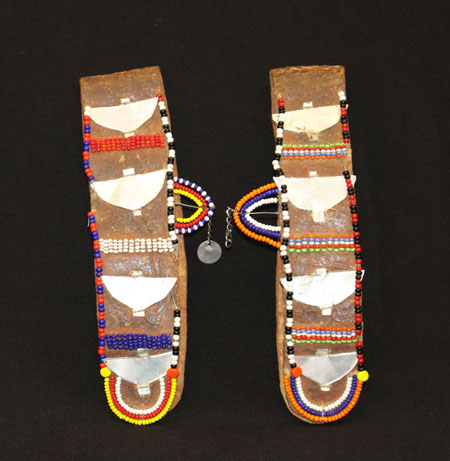Three different artifact teaching kits about Africa are available for checkout. The first kit contains textiles and clothing from various regions in Africa such as Kanga garments and Kuba fabric. The other two kits contain multiple statues, masks, musical instruments, and beaded jewelry that lend insight into the everyday lives of African peoples. Below are images and labels about some of the artifacts within the kits.
In-depth background information about the artifacts in this kit
Kple Kple Mask Reproduction
This type of mask is traditionally from the Baule peoples of the Ivory Coast. Known as the Kple Kple mask, this mask has distinct characteristics that make it easily identifiable. These characteristics are a circular flat face, oval framed eyes, a rectangular mouth, and two horns atop its head. The two large horns represent the horns of buffalo, which are animals symbolic of fertiility and conception. The sun is represented in the circular face of the shape. Kple Kple masks were worn for commemorative, agricultural, and burial ceremonies. The mask pictured below is reproduction, as the face was not made flat. It is most likely that this mask was made for sale to tourists and not used in any actual ceremonies.
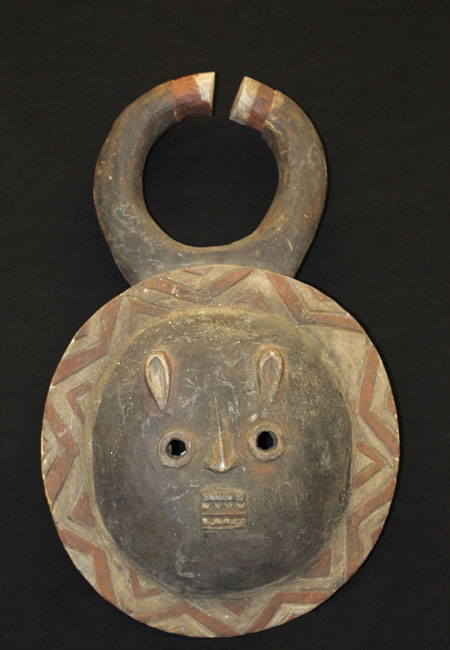
Ngoma Drum
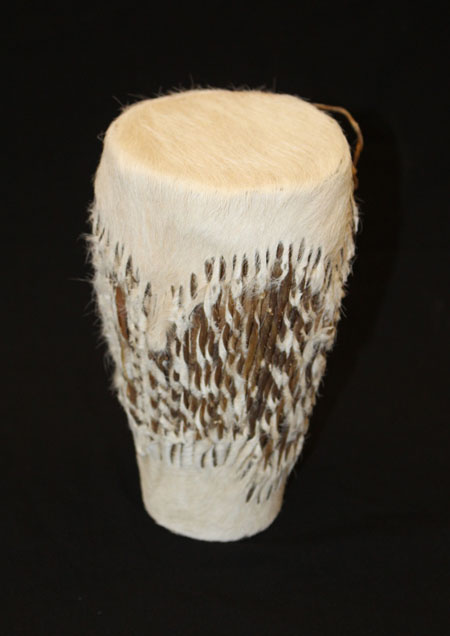
Calabash Gourd
Gourds, such as the one pictured below, are produced by women in areas of both Nigeria and Chad. These highly decorated gourds are used for household storage, serving pieces, and small beverage cups. The makers of these beautifully decorated gourds are typically women. The designs that make these gourds so distinct are created using two different techniques called pyro engraving and pressure engraving. Pyro engraving is the process of burning lines into a surface using a heated blade. Pressure engraving is carving a design using a cold knife and then blackening the carving with soot. The entire exterior of the gourd is decorated, with the pattern centered on the bottom of the gourd.
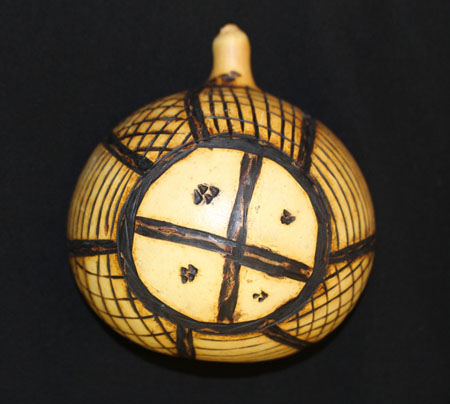
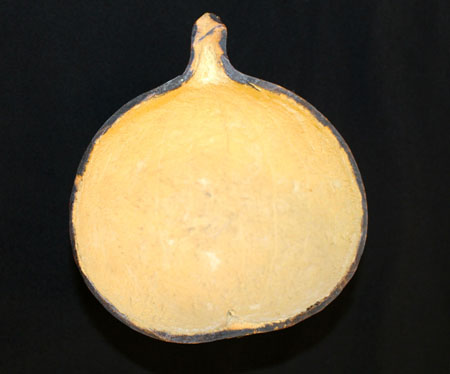
Fly Swatters
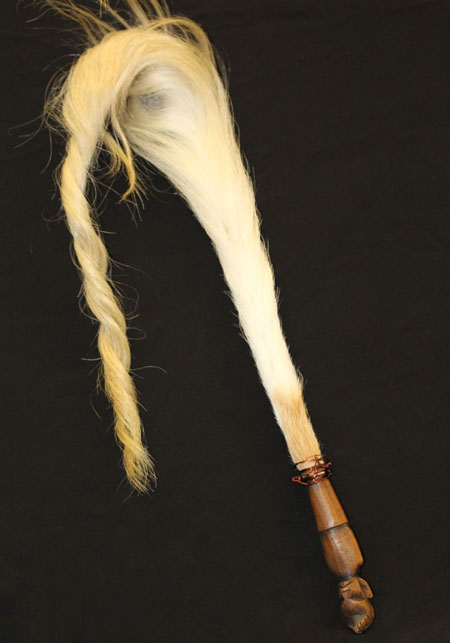
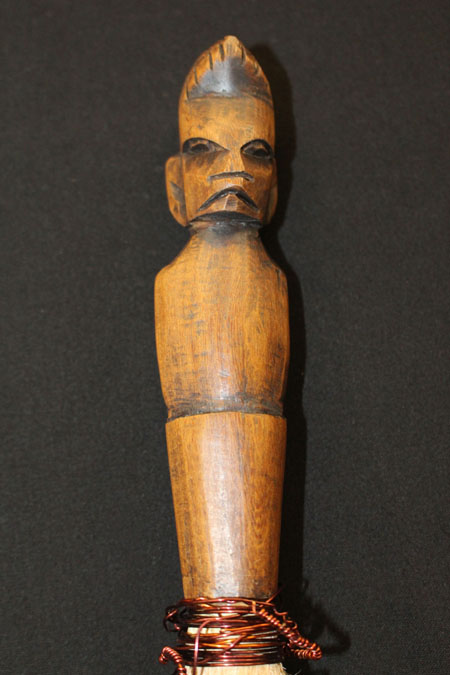
Kiwebe Mask Reproduction
The Kiwebe mask is associated with both the Luba and Songye peoples of the Democratic Republic of Congo. While the role and formal interpretation of the creation of the mask varies among both these groups of people, both groups use these masks in a ceremonial capacity. Kiwebe masks are connected with initations and play an important role in maintaining order in both the Luba and Songye societies. Wearers of the masks also donned costumes made of woven bark accompained by animal furs, skins, and feathers.
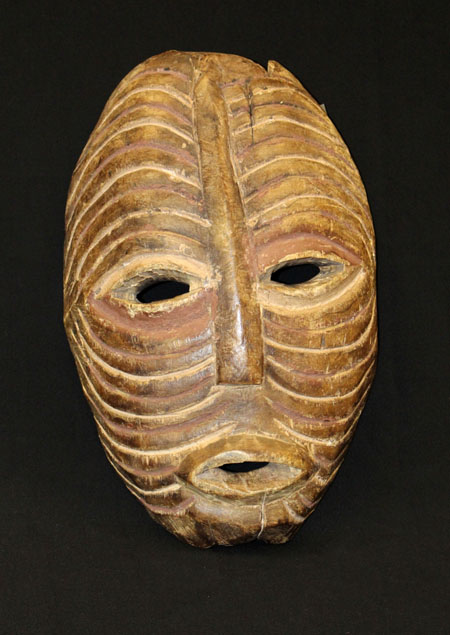
Cowrie Shell Necklace
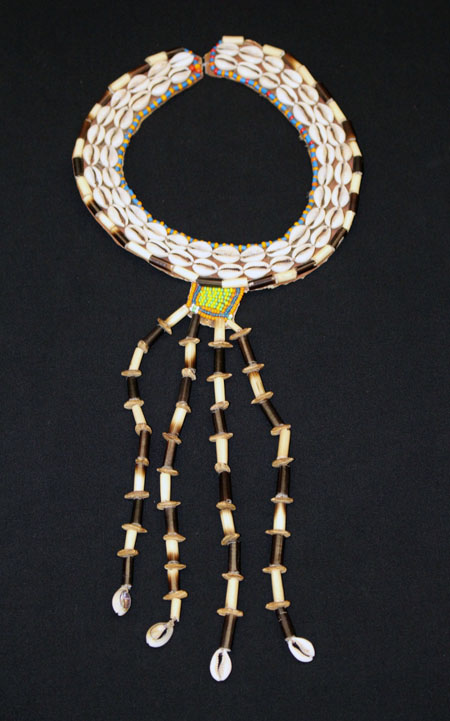
Caxixi Shaker
The caxixi is a percussion instrument made from a closed basket with a flat bottom. It is often filled with seeds. The bottom is traditionally made from a cut from a dried gourd. It appears that for this object, two caxixi shakers have been sown together where the flat bottom would be. The sound is made by shaking, like a maraca. Where the seeds strike creates a slightly different sound. For instance, a softer sound is produced when the seeds strike the reeds where as a louder, sharper sound is made when the seeds strike the gourd base.
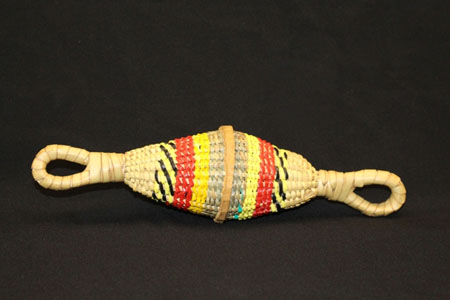
Mud Cloth
Bògòlanfini or "mud cloth" is a handmade cloth produced by the people of Mali. Traditionally, the cotton fabric is dyed in a bath of leaves from the n’gallama tree until it reaches a yellow hue. Once dyed, the cloth is sun-dried and intricate motifs are repeatedly painted on it using fermented mud collected from river beds. A chemical reaction occurs between the yellow dye and mud that leaves behind the mud's brown color after the mud has been washed off. Finally, the yellow n’gallama dye is removed from unpainted parts of the cloth using soap or bleach to make it white. After prolonged use, the very dark brown color from the mud turns a variety of rich tones of brown.
The Bògòlanfini were traditionally worn by Malian hunters for camoflauge, ritual protection, and status. Women also wore mud cloths after puberty rights and immediately after childbirth for protection. Presently, Bògòlanfini are worn by all ethnicities in Mali as an expression of national or ethnic identity as well as for fashion. The mud cloth has also been transformed into a wide variety of clothing, like the scarf pictured below, and has become a popular export particulary here in the United States.
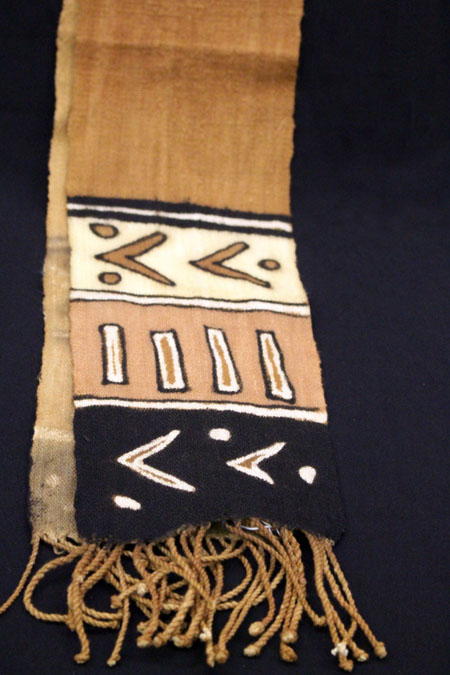
Headrest
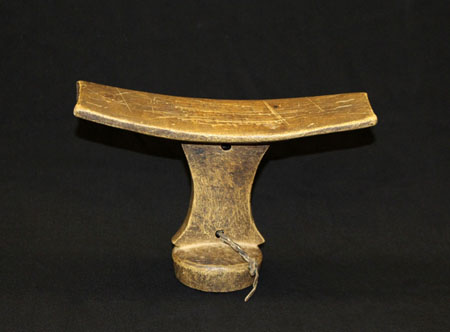
Maasai Ear Flaps
Among Maasai women, ear flaps are part of the ornaments given to a bride for the start of her new life as a wife. The earflaps are worn through the stretched earlobes of the woman, whose father most likely cut the lobes when she started to show signs of puberty. The earflaps pictured below are made of leather and decorated with colorful seed beads, wire, and metal accents.
